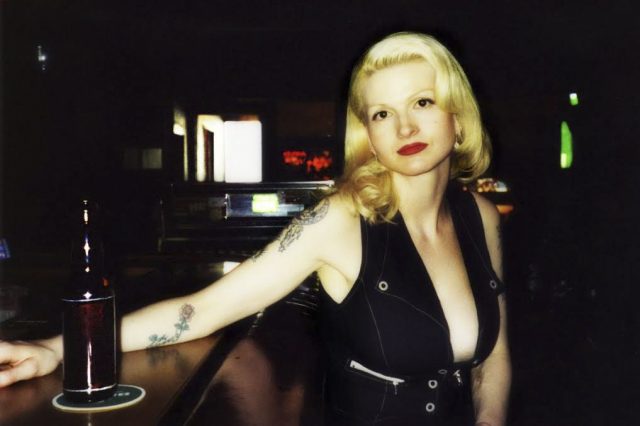Lilly Scourtis Ayers said she was warned against getting too close to Marian Anderson’s wild side.
When Ayers first encountered Anderson, a friend told Ayers that the punk rock singer was trouble. But Ayers said that only enticed her to make a documentary feature titled “Last Fast Ride: The Life, Love and Death of a Punk Goddess.” She said the documentary highlights the life and death of raucous punk rock star Anderson and her relationship with the punk community. The 2011 film will be screened Thursday at the Charles E. Young Research Library Main Conference Room as a part of the UCLA Library documentary series. Ayers said Anderson’s trauma and lifelong struggle to heal intrigued her and became central to the film.
“The more I heard about (Anderson), the more I thought this woman is amazing,” Ayers said. “She had been through so much trauma, and she was able to live her life and make music.”
[Related: Mother and son craft play depicting punk scene in 1980s Los Angeles]
Ayers said performing on stage was a way for Anderson to work through trauma in her past. The Insaints, a band Anderson formed with guitar player and friend Daniel DeLeon, was an up and coming staple in the San Francisco Bay Area hard punk rock scene of the early 1990s, Ayers said. Up until Anderson’s death, Ayers said the Insaints were on a successful trajectory similar to that of Rancid, The Offspring and Green Day. Ayers said it was these bands that led the transition from grunge rock bands of the late 1980s into an era of hard punk.
But Ayers said Anderson and the Insaints did more than leave behind the softer grunge rock sound of bands like The Clash, Misfits and Ramones, notoriously all-white and all-male bands. Anderson was one of only a few females headlining a punk rock band during her time, Ayers said.
DeLeon, Anderson’s bandmate, said she was seen by many of her peers as the mom of punk rock. Compared to other punk rockers, Ayers said Anderson had a voice reminiscent of a psychobilly Gwen Stefani – one that was clear, loud and feminine. And though DeLeon said the band didn’t think much of having a female lead when it played privately, he said Anderson intimidated people in public performances.
“She was a crazy punk rock Amazon woman on stage,” DeLeon said. “I watched her break tables and get in fights, and we would call it her freedom of expression. That’s the part of punk rock history that not a lot of people have heard about – the freedom of expression.”
“Last Fast Ride” producer and Anderson’s long-term partner Danielle Santos Bernal said that, despite Anderson’s Amazonian impression, the punk community accepted her. The hard punk scene was one that appreciated outcasts and intimidation, and Bernal said that made it the perfect community for Anderson’s voice. Bernal said that when there was something the punks wanted to do, they would do it, and when there was something that angered them, they would fight it. However, since Anderson’s time with the Insaints in the early ’90s, Bernal said punk has changed.
“(Punk) doesn’t seem to have that same kind of edge that it used to,” Bernal said. “The edge is dulled now.”
[Related: Album review: Green Day leaves boulevard of broken dreams in wake of underwhelming 13th album]
Bernal said the softening of punk is a result of social media’s influence. Concerns over likes, comments and even sponsorships in the age of influencers have made the newer generation of punk rock artists more reserved, she said. DeLeon said punk has become more accepted and mainstream in recent years, leaving behind the outcast identity common to many punk artists in the ’80s and ’90s. But punk isn’t dead. In fact, Bernal said hard punk is on the verge of a modern resurgence with the next generation, but it just hasn’t reached the surface quite yet.
Even with its many phases throughout the decades, DeLeon said punk has always been therapeutic – a getaway from the rest of the world. Wild, erratic and sometimes lewd performances on stage were a way of healing from trauma and reclaiming one’s body, Ayers said. For Anderson in particular, who survived alleged abuse and was diagnosed with bipolar disorder and depression, Ayers said punk was an escape for her; the punk community was her family.
“All we had to do was love this music, and we were accepted,” Bernal said. “Whatever tragedy you have been through, whatever abuse, whatever addictions you’ve got, we’ve had them, too, and you’re not alone.”

